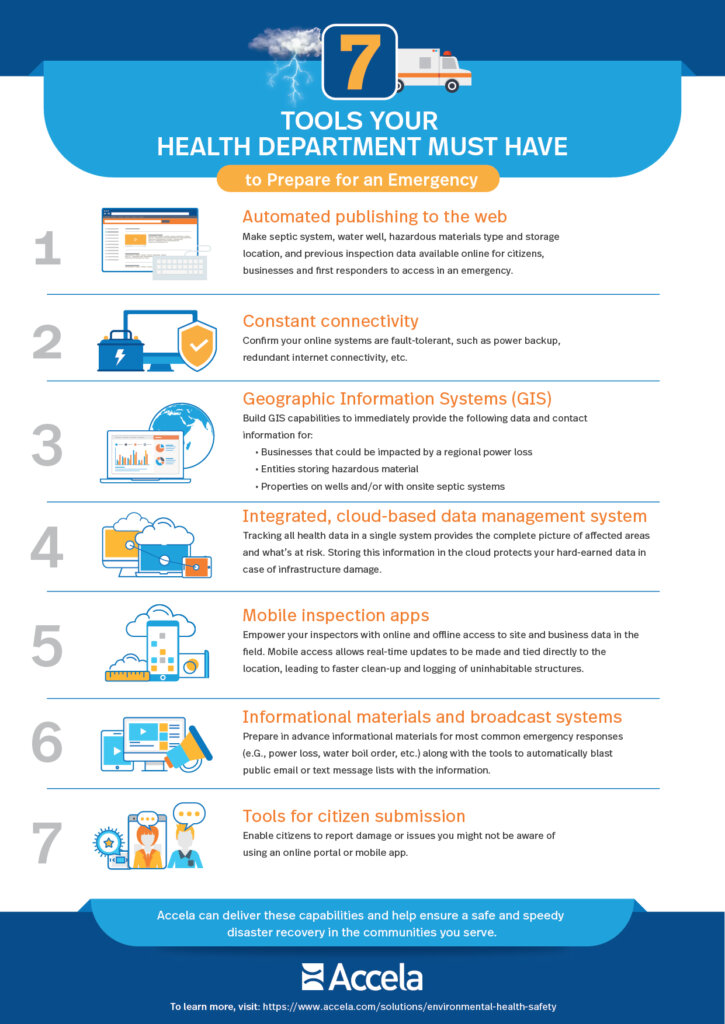The technologies could aid health departments as they assist first responders and manage critical city assets
Whether it’s a five-alarm fire, an outbreak of disease or a bout of hurricane force winds, cities must be prepared for the unexpected.
This is why many cities are investing in modern disaster resilience initiatives. Leaders are designing strategic plans that incorporate data and automated systems for disaster preparedness and recovery. Cities use these advances to single out gaps in emergency resources, spot vulnerable populations during hazardous incidents and adapt to service disruptions by building extra capacity for critical infrastructure.
In the report Investing in Urban Resilience, the World Bank researchers Valerie-Joy Santo and Josef Leitmann, report that losses associated with natural disaster have increased dramatically in recent years and these costs are only expected to rise due to spikes in population growth and denser urban cities. Estimating costs, the World Bank notes that the global average annual losses from disasters in urban areas is estimated to grow from $314 billion in 2015 to $415 billion by the year 2030.
“As people and enterprises, with their assets, increasingly concentrate in cities, they become highly dependent on infrastructure networks, communications systems, supply chains, and utility connections for their well-being,” Santo and Leitmann said. “Natural and manmade disruptions to these highly dependent and interconnected systems can have a catastrophic impact on a city’s ability to meet the most basic needs of its citizens.”
As such, more and more cities are dedicating greater resources toward contemporary disaster resilience tools and services. Health departments play a central role here as they monitor utility resources like water wells and septic systems, emergency communications tools and asset management. To assist cities in their disaster resilience planning Accela offers a list of seven must-have tools for city health departments.
See the infographic below for additional details or learn more about our Civic Solution for Environmental Health here.






